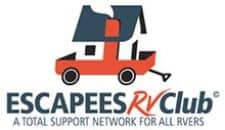Thanks for “checking out” the Changing Gears family checklists, budgets and forms! Our online RV checklists are provided to you free of charge.
Other Changing Gears Checklists
- RV PDI Inspection Checklist
- Arrival & Setup Checklist – Motorhome
- Arrival & Setup Checklist – Towables
- Departure Checklist – Motorhome
- Departure Checklist – Towables
- RV Must-Have Accessories List
- New to RVing? – Getting Started
- Road Test Checklist – Motorhome
- Road Test Checklist – Towables
- RV Camping Gear List
- RV Types Pros & Cons Chart
- RV Basic Lifestyle Budget
All checklists are provided as-is. Use at your own risk. No merchantability for any use express or implied. See Website Terms & Conditions.
Download This Checklist!
If you are new to the RV lifestyle, you owe it to yourself to become well informed before jumping in. Uninformed RV consumers are likely to make unwise choices financially, emotionally, and concerning safety.
Experienced RVers should also review this list when goals change and before buying a new RV.
Below we have compiled a list of steps to guide you through the planning and purchase of an RV. We stopped short of numbering the steps because many can be done out of sequence. We do recommend the sequence as listed below, especially when it involves buying decisions.
Our text contains glossary terms underlined with green dashes to indicate that you can hover your mouse or click for the definition. You may also take advantage of our full listing in the Glossary of RV Terms.
New to RVing? Getting Started!
1. Define RV goals
How do you plan to use your RV? Is it for weekend outings, longer vacations, as a snowbird or full-timer?
2. Become familiar with RV types
Take some time to review the introduction pages to each RV type. No need to research each type in detail at this point—that comes later.
- Class A Motor Home
- Class B Motor Home
- Class C Motor Home
- Fifth Wheel
- Folding Trailer
- Travel Trailer
- Truck Camper
3. Review issues important to different RV lifestyles
All RVing lifestyles have many things in common, yet each has its own special requirements. Review our RV Lifestyles Examined article to learn about the differences.
4. List RV amenities
Create a list of amenities that you would like to have in an RV based on your selected lifestyle. Divide the list into “must have” and “optional” sections. Use our RV Amenities checklist as a guide and visit our Gear Store for recommendations.
5. Create a budget
At this point you should have a rough idea of your desired RV lifestyle and the specifics are coming into focus. Now is the time to create a budget. See Budget for the RV Lifestyle to help you get started. Knowing what you are able and willing to afford will save you precious time by narrowing down your choices. Once you’re ready, use our RV Cost of Living Calculator to finalize your costs.
6. Rent various RV types
In the following steps you need to make decisions on the type and size of the RV. Consider renting several RV types to help you decide. Living in an RV for a few days will give you insights that you can not get on the sales lot. See our Rent an RV page for guidance.
7. Choose RV type
Review the RV Type Pros & Cons checklist and then decide which one will suit your needs best.
8. Choose RV size
After choosing the RV type, determine the size based on your needs. Review Understanding RV Weights and research all relevant weights. For large RV’s also review RV Driver’s License Requirements.
9. Tow vehicle type and size
If you chose a towable RV such as a travel trailer or fifth-wheel, determine the size of vehicle required to tow it. See the Cargo & Truck Selector, Travel Trailer Towing Calculator, and 5th Wheel Towing Calculator for guidance.
10. Choose RV manufacturers to consider
Choose the RV manufacturers that meet your criteria with the help of RV Consumer Group resources in the “Must Read” section of our books list. The RVCG “Ratings” are especially important to quickly select manufacturers with good track records of quality and safety.
Consult our Manufacturers list where you can search by RV type.
11. Choose RV models to consider
Choose a small number of RV models that meet your needs from each manufacturer selected previously. Keep in mind that the average owner keeps their RV for five years, so do your best to anticipate your needs for this span of time.
12. Request RV insurance quotes
Request one or more preliminary RV insurance quotes using the likely RV and truck models you are considering. A good starting point is Good Sam VIP Insurance. Add the preliminary insurance premiums to your budget. After you select the exact RV model, you should request quotes from multiple insurance companies.
If you request a quotation from your existing insurance agent, be aware that he may or may not have specialized RV insurance.
To understand the differences between auto and RV insurance, see the RV Insurance FAQ’s.
13. Determine fair market value
Before heading out to buy, do some research to determine the fair market value of each RV model you selected. Do this even if you are planning to buy a new unit. See Determining an RV’s Fair Market Value.
14. Inspect before buying new or used
When you find an RV that you are interested in, give it a thorough inspection before signing any papers. See the RV Inspection Checklist.
And if you’re buying a used RV, consider the depreciated value.
15. Practice run
Set up your RV as soon after buying it as possible. If you do not have immediate travel plans, find the nearest RV park and set up your unit there. Live in your new RV a few days to find potential problems before you head out on your big trip.
See the Road Test – Motor Homes or Road Test – Trailers checklists.
16. Join the community!
By now you have gained a lot of knowledge about RV’s and the RV lifestyle. Join the RV community to further your knowledge, find helpful information, and share your experiences with others. Find a discount or social club or an RV discussion group.
Andy Herrick is a blogging nerd, #8 Enneagram, wannabe bread baker, INTJ, RV industry professional, and small business entrepreneur. He can be found hanging out with his lovely wife and family, skiing, cycling, climbing, hiking, and convincing anyone who will listen why dogs aren’t really that great of pets. Also, he runs this website.










